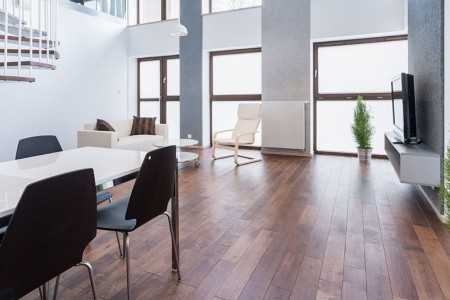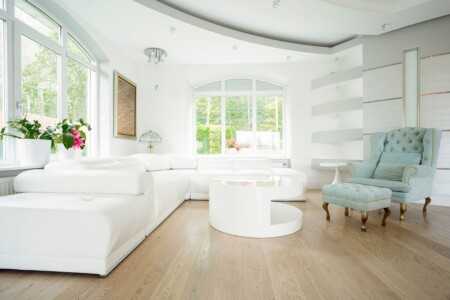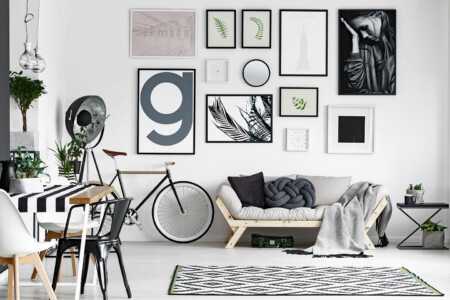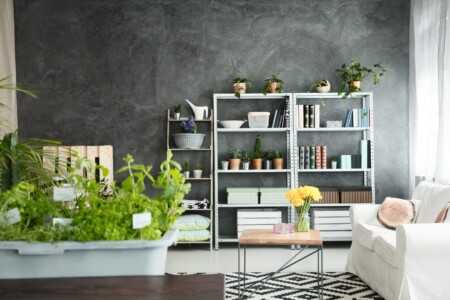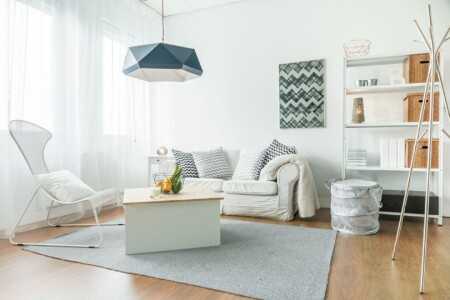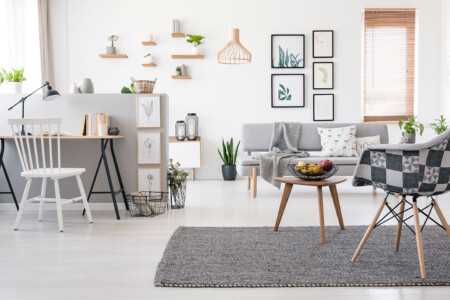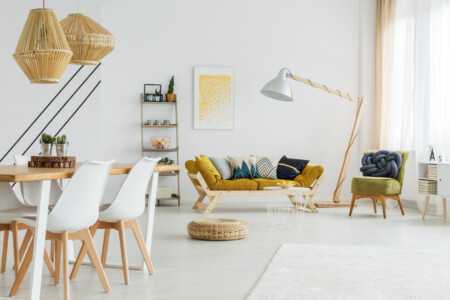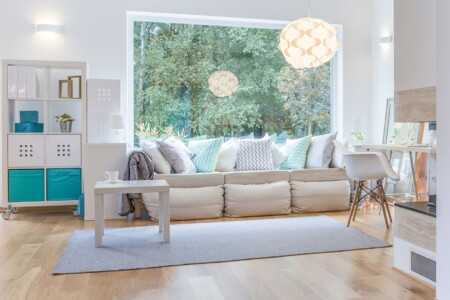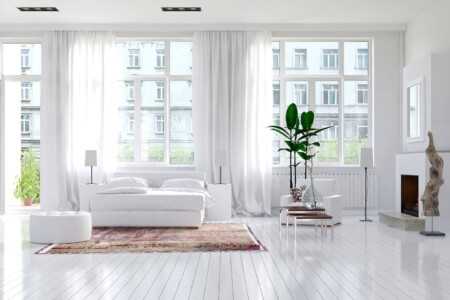Could this 7 persons 3-bedroom apartment in Hurghada el dahar meet the needs of families with blended families?

Assessing the suitability of a 7-person 3-bedroom apartment in Hurghada el dahar for blended families
Living space dynamics for blended families
Finding the right apartment that meets the needs of a blended family can be a complex task, especially when considering space, privacy, and functionality. A 7-person 3-bedroom apartment in Hurghada El Dahar offers a unique living setup, but is it truly suitable for families with blended dynamics? To answer this, it’s important to analyze how such an apartment accommodates the diverse requirements of stepchildren, stepparents, and siblings sharing a home.
Blended families often need separate private areas to ensure harmony amid the mix of family members. With three bedrooms catering to seven people, careful allocation of rooms is crucial. Parents usually require a master bedroom, while remaining bedrooms can be shared by children or assigned by gender or age. The distribution of space must foster comfort and personal boundaries, so families feel respected and relaxed.
Space optimization and room allocation
In a 3-bedroom apartment designed for seven occupants, each bedroom likely becomes a shared space. For example:
- Master Bedroom: Ideally occupied by the primary custodial parent(s).
- Second Bedroom: Shared among a few children, possibly grouped by gender or age similarity.
- Third Bedroom: Allocated to the remaining children or used as a flexible space (guest room, study, or playroom).
To optimize comfort, families may need to invest in bunk beds, storage solutions, or room dividers. Since personal space is limited, smart furniture and organization can help maintain a peaceful environment.
Common areas for family bonding
A well-designed living room and kitchen area become essential hubs within a 3-bedroom apartment housing seven people. Hurghada El Dahar apartments often offer open-plan living designs, which can promote interaction and strengthen family bonds. Shared meals and gatherings create opportunities for blended families to build relationships, share daily experiences, and manage responsibilities together.
However, the size of common spaces also matters. Smaller living or dining areas might create challenges during busy times when several family members are using the space simultaneously. Proper furniture arrangement and possibly multifunctional dining tables can make these areas more adaptable.
Bathroom facilities and privacy considerations
Bathroom availability is frequently a key concern in multi-person households. A typical 3-bedroom apartment may include one or two bathrooms. For seven individuals, especially in a blended family scenario with children of varying ages, this can require substantial scheduling and cooperation.
If the apartment includes two bathrooms, this improves morning routines and personal privacy. But with only one bathroom available, blended families might face difficulties, which could lead to frustration or conflicts. Understanding the exact bathroom setup in the Hurghada El Dahar apartment will guide whether it can comfortably support a family of this size.
Neighborhood and amenities influence
The apartment’s location in Hurghada El Dahar also impacts its suitability. This district is known for its accessibility to schools, markets, parks, and public transportation. For blended families, convenient access to educational institutions and recreational facilities is beneficial, providing children with opportunities for socialization outside the home.
Additionally, nearby amenities such as community centers or playgrounds can compensate for limited indoor space by offering children safe places to play and bond with siblings and peers. This external space becomes significant in maintaining a positive daily environment for large families.
Financial factors and affordability
Budget considerations for blended families also come into play when evaluating this apartment. The cost-efficiency of housing seven people in a 3-bedroom apartment can be attractive compared to renting multiple smaller units. Economical utility usage combined with centralized living may reduce overall expenses.
Nevertheless, families should weigh potential costs of making the apartment more suitable — such as buying additional furniture, enhancing storage, or creating privacy solutions. These investments might be necessary for maintaining harmony and comfort but add to the initial financial commitment.
Emotional and social needs addressed by layout
Beyond physical space, blended families often face emotional complexities that a home must accommodate. Providing each family member with a sense of belonging and personal space is crucial. The apartment’s layout should encourage inclusive family time while respecting individual needs for withdrawal and privacy.
For example, a communal gathering area next to bedrooms helps balance social interaction with personal downtime. Flexible room usage can empower family members to personalize their spaces, which strengthens self-identity within a blended family setting.
Final observations on suitability
A 7-person 3-bedroom apartment in Hurghada El Dahar can meet the needs of blended families, but this depends heavily on thoughtful space management, willingness to share, and adaptation to limited individual privacy. It offers a cohesive living solution with access to local amenities and community resources that further enhance family life.
If blended families are proactive about organizing their living arrangement and communicate effectively regarding space use, this type of apartment could function well. It merges convenience, affordability, and community advantages, which are all valuable for supporting harmonious and nurturing blended family environments.
Practical tips for maximizing space and privacy in shared family living environments
Creating zones for personal space
In a shared family living environment, especially when multiple generations or blended families coexist, carving out designated areas for each family member can greatly improve both space utilization and privacy. You can start by identifying the unique needs of each person regarding work, study, rest, or leisure.
Use furniture arrangement to define zones within common rooms. For example, a bookshelf or a tall plant can act as a natural divider in the living room, creating a cozy reading nook separate from the main seating area. Similarly, placing desks or dressing areas inside bedrooms near windows leverages natural light and encourages a personal retreat without needing extra rooms.
When bedrooms are limited, multifunctional furniture pieces—such as Murphy beds or fold-out sofas—can transition spaces from passive to active based on the time of day, helping each person feel that their space is respected and functional.
Smart storage solutions to ease clutter
Clutter can quickly reduce privacy and create tension among family members sharing space. Implementing smart storage strategies can free up room and create a sense of order that makes living together more harmonious.
- Under-bed storage boxes: These are perfect for storing out-of-season clothing, shoes, or toys, making the most of often wasted space.
- Wall-mounted shelves: Vertical storage keeps floor space clear and can showcase personal items or books without overwhelming the room.
- Dual-purpose furniture: Items like ottomans with storage inside can hide away blankets, games, or daily essentials while serving as seating.
- Cubby systems and bins: Labelled bins help children and adults alike keep their belongings organized, encouraging personal responsibility for shared areas.
By reducing clutter, shared rooms feel bigger and offer discreet areas for family members to keep their possessions private.
Respecting privacy through sound management
In an apartment where rooms are close together, controlling sound is key to preserving privacy. Adding soft textiles like rugs, curtains, and cushions absorbs noise and can reduce the echo effect, creating a quieter atmosphere throughout your home.
Soundproofing door seals or using draft stoppers also help contain conversations within rooms, which is especially helpful for family members who require quiet times for work or rest. Additionally, white noise machines or calming background music can mask intrusive sounds, enhancing everyone’s comfort.
Establishing clear communication and boundaries
Open communication forms the foundation for success in shared family living environments. Families should establish and routinely revisit household rules that respect personal boundaries and shared responsibilities.
Some examples include:
- Setting quiet hours, such as after 9 pm when everyone should minimize noise for sleeping family members.
- Agreeing on schedules for shared spaces like the bathroom or kitchen to avoid overlaps during rushed mornings or evenings.
- Encouraging respectful use of each other’s belongings and spaces—knowing when to ask before borrowing adds respect.
Having family meetings to discuss needs or conflicts ensures that every member feels heard and valued, which leads to a better shared living experience.
Utilizing outdoor or communal spaces
If your living arrangement includes access to outdoor areas such as a balcony, terrace, or communal garden, encourage family members to take advantage of these spaces. This not only expands usable square footage but also provides a natural retreat for relaxation or socializing away from indoor confines.
Simple additions, like outdoor seating, plants for privacy screens, or small shade umbrellas, can transform these areas into comfortable extensions of your home. When possible, designating times for individual or group use of these spaces can enhance privacy by preventing overcrowding.
Choosing flexible room layouts and decor
An adaptable living space adjusts to the evolving needs of blended families. Using modular furniture that can be rearranged allows you to modify the living environment quickly based on holidays, visitors, or daily routines.
For example:
- Lightweight tables and chairs that are easy to move encourage creating private workstations or play areas as needed.
- Using curtains or foldable screens inside bedrooms or shared areas can create temporary privacy barriers without permanent room divisions.
- Color-coding or personalizing areas with décor, such as individual shelves or bedding styles, supports each person’s sense of ownership and identity in shared spaces.
Harnessing technology for privacy and convenience
Modern technology can also assist families living in close quarters. Smart home devices like individual bedside lamps, wireless headphones for private audio, or doorbell cameras increase comfort and security without invading privacy.
Scheduling apps or shared family calendars on smartphones help coordinate shared space usage and chores, reducing misunderstandings and fostering cooperation.
Maximizing space and privacy in a shared family environment means integrating smart design, thoughtful communication, and flexible living solutions. With these practical strategies, it’s possible to create a home where every family member—regardless of the complexity of the household—can feel comfortable, respected, and truly at ease.
Summary of key points
For blended families considering a 7-person 3-bedroom apartment in Hurghada El Dahar, understanding how this living space aligns with their unique needs is essential. The apartment’s size and layout can support a family of this composition, but success hinges on thoughtful organization and communication. Prioritizing everyone’s need for privacy and shared quality time helps create a harmonious home environment, even when bedrooms must be shared.
Simple strategies, like designating quiet zones and personal storage, can help maximize the functionality of the space. Using multifunctional furniture, such as bunk beds or foldable desks, allows for flexible sleeping and activity areas that adapt to changing family dynamics. Additionally, encouraging open dialogue among family members about their daily routines and privacy expectations fosters respect and cooperation.
By approaching the 7-person 3-bedroom apartment with creativity and understanding, blended families in Hurghada El Dahar can find a balance that makes day-to-day living comfortable. While space may feel tight at times, carefully planning room use and encouraging mutual respect can transform the apartment into a nurturing, organized home for all members. This approach not only meets practical needs but also strengthens family bonds in a shared living setting.

